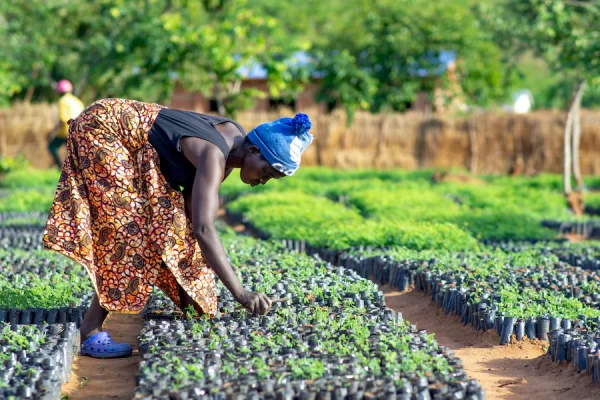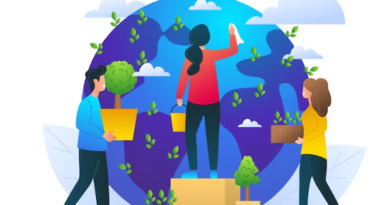Reforestation Projects: Harnessing Innovation to Restore Our Planet’s Green Cover
As the world grapples with environmental challenges, reforestation projects have emerged as a beacon of hope for revitalizing ecosystems, combating climate change, and enhancing biodiversity. Reforestation involves replanting trees in areas where forests have been lost due to deforestation, natural disasters, or other causes. This blog delves into the significance of reforestation efforts, their environmental impact, and the latest innovative practices reshaping our approach to forest restoration.
Why Reforestation Matters?
Forests are vital to the health of our planet. They act as natural carbon sinks, absorbing carbon dioxide and mitigating climate change. They also provide crucial habitats for countless species, support water cycles, and prevent soil erosion. Reforestation is more than just planting trees; it’s about rejuvenating ecosystems and restoring environmental balance.
Environmental Advantages of Reforestation:
- Carbon Absorption: Trees capture carbon dioxide, a leading greenhouse gas, from the atmosphere. Reforestation helps counteract carbon emissions, playing a key role in climate change mitigation.
- Wildlife Habitat Creation: Planting trees restores habitats for wildlife, boosts biodiversity, and aids in the recovery of endangered species.
- Water Cycle Regulation: Forests influence the water cycle by absorbing and releasing water vapor. Reforestation helps manage local and global water systems, reducing risks of floods and droughts.
- Soil Protection: Tree roots anchor the soil, preventing erosion and maintaining soil fertility. This is especially crucial in areas prone to landslides and desertification.
- Air Quality Enhancement: Trees filter pollutants from the air, improving air quality and creating healthier environments for communities.
Cutting-Edge Reforestation Techniques:
Reforestation efforts are becoming more sophisticated with technological advancements and innovative methods. Here are some groundbreaking approaches making waves:
- Drone-Assisted Planting: Drones equipped with seed pods can plant trees in difficult-to-access areas. This technology speeds up reforestation and covers vast landscapes efficiently.
- Agroforestry: This approach integrates trees into agricultural landscapes, enhancing soil health, boosting crop yields, and increasing biodiversity.
- Community-Driven Projects: Engaging local communities in reforestation fosters long-term sustainability and ensures projects meet local needs and conditions.
- Miyawaki Method: This technique focuses on planting dense, native forests in small spaces, promoting rapid growth and high biodiversity, and quickly establishing self-sustaining ecosystems.
- Rewilding: Rewilding aims to restore entire ecosystems by reintroducing native species and allowing natural processes to shape the landscape, creating resilient and diverse environments.
Notable Reforestation Success Stories:
Several reforestation projects around the globe highlight the transformative potential of forest restoration:
- The Great Green Wall, Africa: An ambitious initiative to create a green belt across the Sahel region, fighting desertification, restoring degraded lands, and improving local livelihoods.
- China’s Loess Plateau: A major restoration effort has transformed the once-degraded Loess Plateau into productive land, enhancing agricultural output and improving local conditions.
- India’s Cauvery Calling: A project focusing on agroforestry and river rejuvenation in the Cauvery river basin, aiming to plant 2.42 billion trees and enhance water availability.
- Costa Rica’s Protected Areas: By expanding national parks and promoting ecotourism, Costa Rica has successfully reversed deforestation, leading to significant forest recovery and biodiversity conservation.
How You Can Make a Difference:
Everyone can contribute to reforestation efforts in meaningful ways. Here’s how you can get involved:
- Plant Trees: Participate in local tree-planting activities or start a tree-planting initiative in your community.
- Support Reforestation Groups: Donate to or volunteer with organizations dedicated to forest restoration and environmental conservation.
- Advocate for Green Policies: Support policies that promote forest protection and sustainable land use.
- Reduce Your Footprint: Minimize waste and lower your carbon emissions to reduce the need for deforestation-driven products.
- Raise Awareness: Educate others about the importance of forests and the benefits of reforestation.
Conclusion:
Reforestation projects are crucial for revitalizing our planet’s health and balance. By planting trees, restoring ecosystems, and supporting biodiversity, we can address climate change and secure a sustainable future. Embracing innovative methods and collective action, we can make significant strides in forest restoration. Whether through global campaigns or local initiatives, every effort contributes to a greener, healthier world.
FAQs:
1. What exactly are reforestation projects?
Reforestation projects involve planting trees in areas where forests have been lost due to deforestation, natural events, or other causes. These initiatives aim to restore and enhance forest ecosystems, boost biodiversity, and address climate change by increasing the number of trees.
2. Why are reforestation projects crucial?
Reforestation projects are essential because they help rejuvenate ecosystems, improve air and water quality, support wildlife habitats, and combat climate change by capturing carbon dioxide. They also play a role in preventing soil erosion and supporting the well-being of local communities.
3. How do reforestation projects help with climate change?
Trees absorb carbon dioxide, a major contributor to climate change. Reforestation projects increase tree cover, which helps absorb more CO2 from the atmosphere, thereby reducing the greenhouse effect and mitigating global warming.
4. What are some advanced techniques used in reforestation projects?
Modern reforestation employs various advanced techniques, such as using drones to plant seed pods in inaccessible areas, the Miyawaki method for creating dense, rapid-growth forests, and agroforestry, which integrates trees into farming practices for enhanced productivity and ecological balance.
5. How do reforestation projects affect biodiversity?
Reforestation projects significantly enhance biodiversity by creating new habitats for wildlife, supporting the recovery of endangered species, and fostering a more diverse ecosystem. By restoring forests, these projects help maintain ecological balance and support a wide range of flora and fauna.
6. Can reforestation projects aid in soil conservation?
Absolutely. Reforestation helps conserve soil by stabilizing it with tree roots, reducing erosion, and maintaining soil fertility. This is especially valuable in areas susceptible to landslides and land degradation.
7. What are some examples of successful reforestation projects?
Several reforestation projects have made a notable impact, such as Africa’s Great Green Wall, which aims to combat desertification; China’s Loess Plateau restoration, which has revitalized degraded land; and Costa Rica’s expanded protected areas, which have reversed deforestation and increased biodiversity.
8. How can local communities participate in reforestation projects?
Local communities can get involved by joining tree-planting events, supporting or volunteering with local environmental groups, advocating for green policies, and integrating trees into community gardens and agricultural practices.
9. What challenges do reforestation projects encounter?
Challenges include ensuring the long-term maintenance of newly planted forests, addressing the unique needs of local ecosystems, securing adequate funding, and managing potential conflicts with land use. Effective projects often involve community engagement and ongoing management to overcome these obstacles.
10. How can individuals support reforestation efforts?
Individuals can contribute by participating in local tree-planting events, donating to or volunteering with reforestation organizations, advocating for policies that promote forest conservation, and adopting sustainable lifestyle practices to reduce environmental impact.
11. What role does technology play in contemporary reforestation projects?
Technology plays a vital role in modern reforestation through innovations like drone-assisted planting, remote monitoring of forest health, and data analysis for optimizing planting strategies. These tools enhance the efficiency and effectiveness of reforestation efforts.
12. How do reforestation projects benefit local economies?
Reforestation projects can stimulate local economies by creating jobs in forestry and environmental management, encouraging ecotourism, and boosting agricultural productivity through agroforestry. Additionally, restored forests can improve local resource availability and enhance community well-being.




